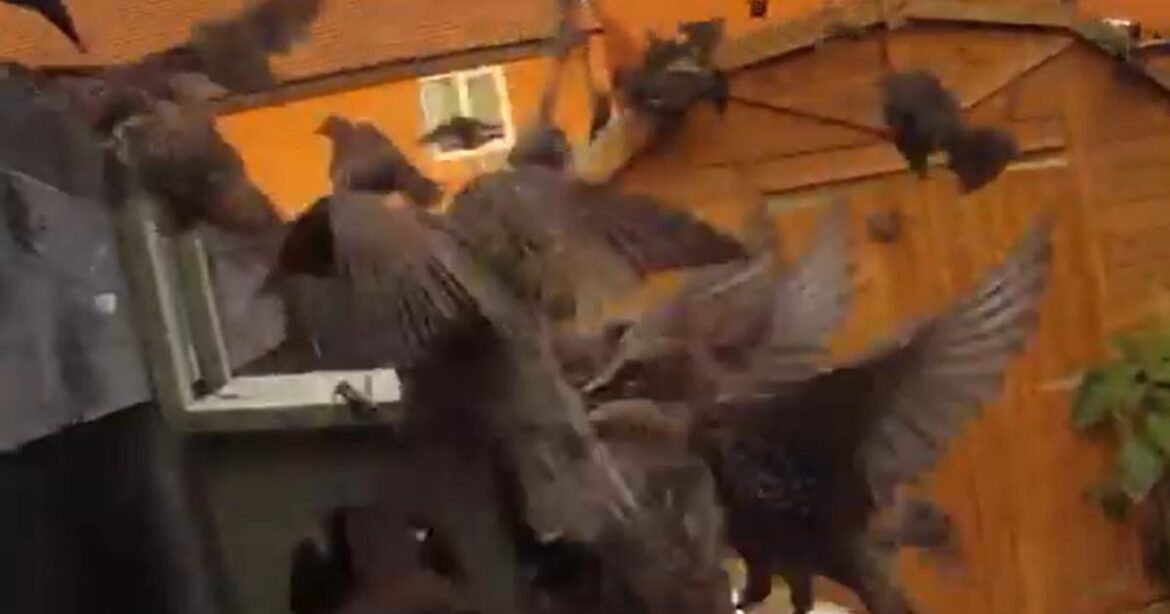Danielle Piggott of Derby caught the spectacle on her Ring Stick Up Cam Battery, where approximately 100 birds landed in her garden.
In a statement from Ring, they said: “What started as a regular day in her garden turned into a scene straight out of The Birds, as a massive flock of starlings (and a few cheeky magpies) swarmed her bird feeders.”
Discussing the footage, Danielle said: “The starlings (and magpies) have learnt the sound of me opening the shed and will gather on the surrounding rooftops waiting for me to finish and go inside.
“On this day, I barely closed the back door before they all swarmed over. Usually it’s only 10-15 starlings but on that day there must have been at least 100!”
Danielle has made a deliberate effort to encourage birds into her garden as she loves watching them.
She shared: “The magpies that visit my garden are hilarious, they tap on my back door or perch on the fence and squawk if I’m late with feeding in the morning or the feeders are empty.”
Professor Anne Goodenough, Applied Ecologist at the University of Gloucestershire, explained why this unusual event might have occurred.
She said: “All the birds are starlings and are being attracted by the food in the green feeder – it’s a mixed group of young birds (brownish in colour) and adults (all dark) all noisily trying to beat the others to the food… literally trying to sort out a pecking order!”
“As there are both adults and young birds in the mix, I’d say there were several nests close by.”
She continued: “Starlings are a gregarious species, so larger groups are more likely, especially when they are attracted to food.”
Do starlings stay in the UK all year?
Most starlings are resident in the UK all year, but some are migratory, according to the Woodland Trust.
Recommended reading:
The organisation adds: “They travel from northern Europe to spend the winter here, arriving during September and October. They will return home during February and March.”
As a whole, the species is “widespread and abundant” across the UK, except for the Highlands of Scotland.
They can be found in gardens, parks and farmland, with there being approximately 1.8 million in the UK.


Comments are closed.